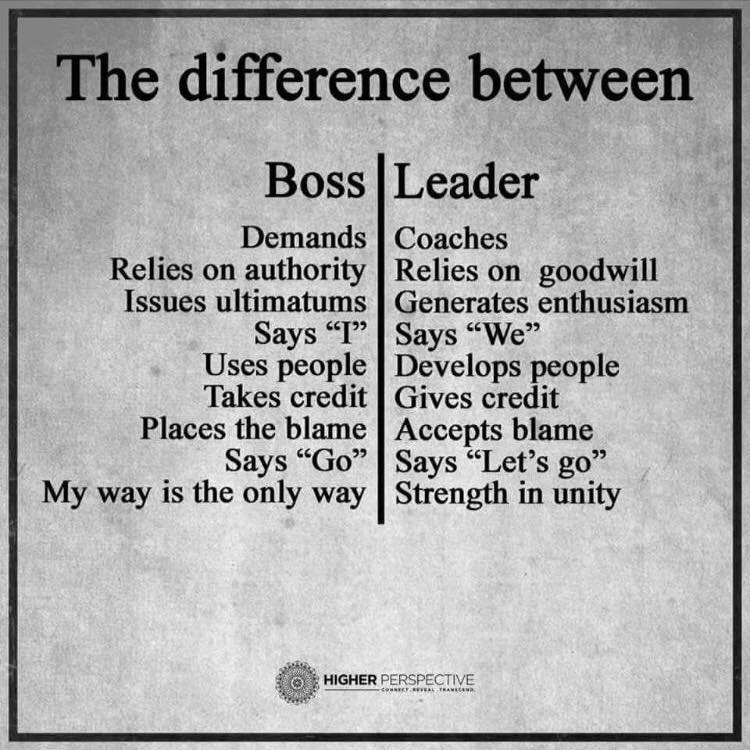The False Choice Between ‘Bosses’ and ‘Leaders’
/By Thomas J. Lee
One of many like it, another Facebook meme purports to draw a distinction between being a “boss” and being a “leader.” It has kernels of truth in it. I just wish it accurately depicted the work of real leadership.
It looks like this:
Generally speaking, the phrases on the right, under Leader, are good advice for any manager. But here’s the thing: The contrast between bossing and leading is a false one. Let me explain.
Leading people is not just a matter of being kinder and gentler. It is doing the hard work that leadership requires—the work of leading. Sometimes, like it or not, that precludes kind and gentle.
You see, bossing people around is not the opposite of leading them. Indeed, there are times when a good leader must be bossy, when she must demand something. In those moments, which commonly occur on tight deadline, or in a chaotic situation, or in a full-blown crisis, the leader would be negligent not to demand.
You can still be courteous, and you should be. Say please and thank you. Ask instead of order. But do whatever is necessary (and safe, ethical, and legal) to survive and grow.
If the meme were labeled Boss versus Coach, I would find it more agreeable, although “boss” can be understood, and indeed usually is understood, as a synonym for any supervisor or manager, rather than for someone who is just plain bossy. People commonly refer to their “boss” in neutral or even favorable terms.
Back to my central point: What exactly is the real work that leadership requires? Glad you asked.
Leadership is best understood by comparing and contrasting it with management—and neither of them as levels on an org chart or a hierarchy. Rather, each should be viewed as a particular kind of responsibility and opportunity. Leadership and management are both necessary, and both are important. It is wrong to think you should stop managing and begin leading. Rather, anyone with responsibility for the direction or nature of an organization’s productivity, or for the culture or micro-culture that governs so many choices and so much labor, must do the work of both, managing and leading.
The work of management and the work of leadership both revolve around the expectations of key stakeholders: namely your customers, employees, owners/investors (or members and donors in a nonprofit organization), and the general public through the proxy of government, which grants a license to the organization to do the work it wishes to do. Those four 800-pound gorillas are vital, because each of them has the power to do real damage if their expectations are not met. They can even shut your organization down.
In a nutshell, managing involves making sure that all stakeholder expectations are met. Leadership involves creating and communicating new expectations, to cope with changing times or, more often, to set a different direction or to pick up the pace.
There’s much more to it, but that’s the real nub of the difference.
It’s probably asking too much of the meme artists and Facebook users to capture a sophisticated and nuanced distinction like this, so I am not holding my breath. I just wish more managers, up and down the hierarchy, would make a greater effort to understand leadership.






